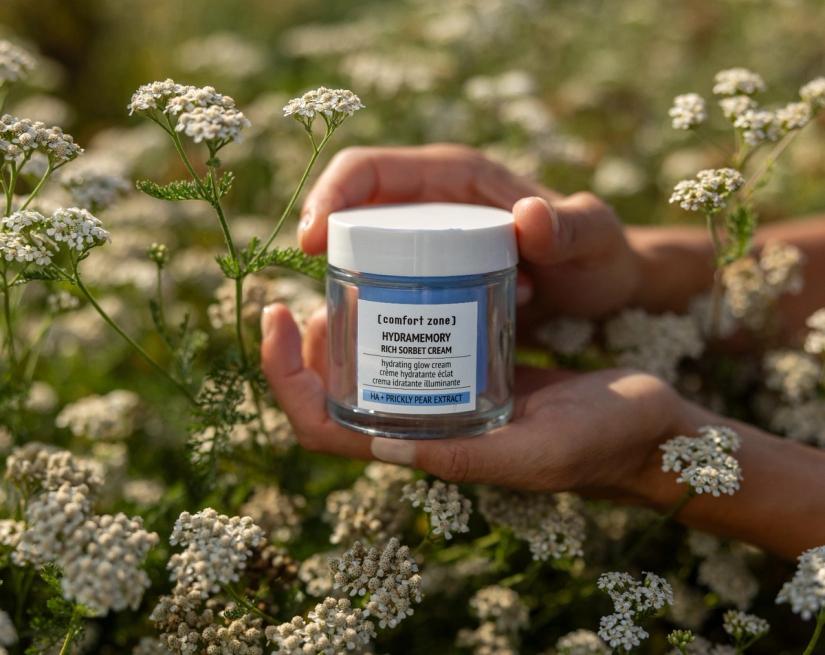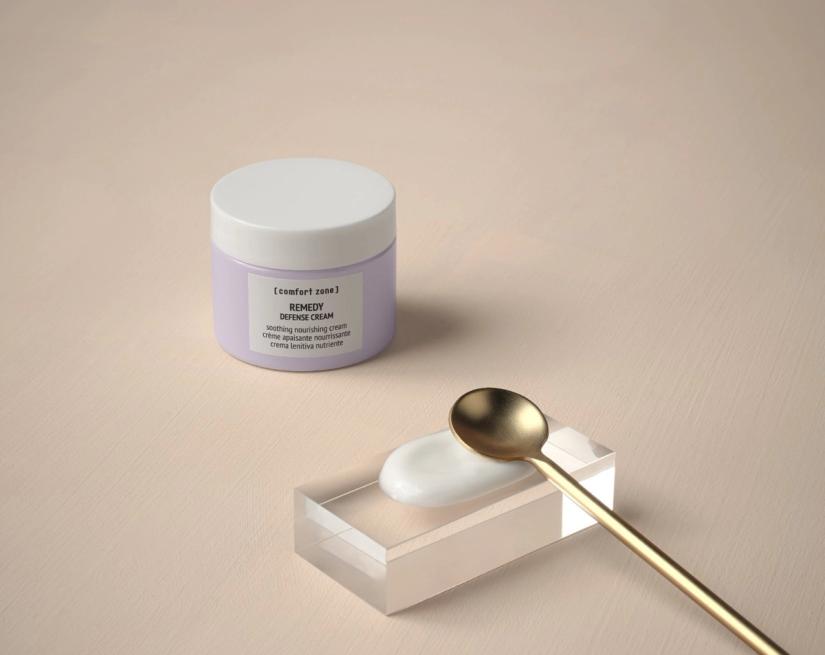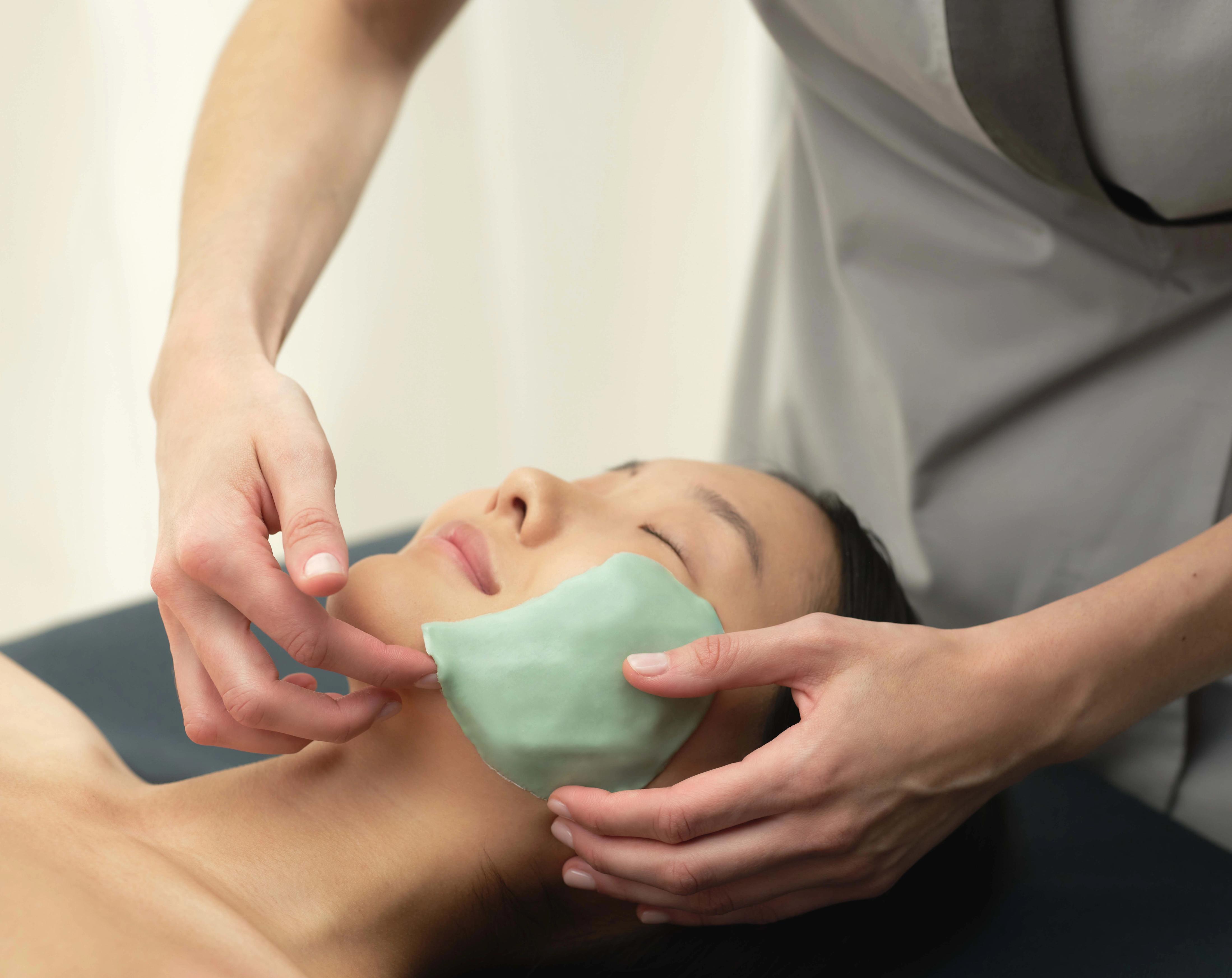skin care
Regenerative Skincare: Sustainable Beauty in a Changing Climate
Simon Jacskon | Head of Botanical Research
10 min read

Regenerative skincare is an innovative approach that aims to revitalize the skin’s natural healing processes on a cellular level while being part of the solution for creating a healthier planet. Discover skincare products that deliver younger, more radiant-looking skin powered by scientific revelations that demonstrate a commitment to sustainability. Together, these practices create beauty that is beyond skin-deep, nurturing the health of the planet while supporting your skin.
What is Regenerative Skincare?
There is increasing talk about regenerative skincare, but what exactly is it? In dermatology, the term is traditionally related to skin structure. A regenerative skincare approach aims to revitalize skin metabolism by promoting more vital, radiant, and healthy skin.
However, the concept of “regenerative” is evolving and expanding its meaning. Today, it no longer refers only to anti-aging cosmetics but also embraces a broader vision that includes the regeneration of the planet. In this sense, regenerative skin care also takes on an ethical and sustainable value, becoming an expression of a commitment not only to the well-being of the skin but also to the environment.

The Scientific Basis of Regenerative Skincare
Regenerative skincare consists of an innovative approach that goes beyond simple moisturization or surface protection. Instead, it aims to stimulate the skin’s natural biological processes to improve its structure, functionality, and appearance over time. The science behind regenerative skincare takes its cues from advanced scientific discoveries in the fields of biology, epigenetics, and biotechnology,intending to stimulate the skin's natural regenerative mechanisms for youthful, radiant skin.
Research from Mayo Clinic, shows that while our genes influence aging, lifestyle choices and environmental factors play a much more significant role in how we age. This science has become an integral part of regenerative cosmetics—an approach that supports the health of the skin and our bodies while also aiming to regenerate the environment around us.
What Are the Benefits of Regenerative Skincare?
In recent years, there has been an increasing focus on choosing eco-friendly cosmetic ingredients to create products that are both effective and environmentally sustainable. The active ingredients in regenerative cosmetic products are selected precisely based on this simple principle—but through a more mindful approach. In advanced regenerative cosmetics, we look not only at efficacy for the skin but also at the impact each ingredient has on the environment.
Thanks to the giant strides made by green chemistry, cosmetic companies now have the ability to select ingredients that are good for the skin without hurting the planet. This provides a more ethical, responsible approach that is in line with what more people are looking for: products that respect the skin and the environment.
Understanding Key Ingredients in Sustainable Regenerative Skincare
The skin has an extraordinary capacity for self-renewal. However, this capacity progressively deteriorates over time, causing loss of elasticity and tone and contributing to the appearance of wrinkles. The specific approach of regenerative skincare helps heal the skin from the outside while regenerating it from the inside, providing clear and lasting benefits for the health of the entire tissue and body.
Regenerative skincare accelerates cell turnover with the use of biomimetic peptides or exfoliating agents. These help replace dead cells with new healthy ones, which strengthens the skin while also eliminating imperfections or signs of aging.
Repairing peptides and hyaluronic acid at different molecular weights provides hydration that influences multiple epidermal levels, reaching even the deepest layers. Essential fatty acids or vitamins such as niacinamide also strengthen the skin’s barrier by improving hydration levels to protect from environmental damage.
The use of antioxidants and growth factors in regenerative skincare offers a boost in skin vitality by reactivating the natural biological regeneration processes that tend to diminish with age. The result is healthier, firmer, and more radiant skin.

Personalizing Your Skincare Routine with Regenerative Methods
By incorporating the principles of regenerative skincare into your daily beauty routine, you can turn your skin's appearance and health around. Consider it a skincare reset. Try following these simple tips to get started:
Step 1: Use gentle cleansers that don’t alter the skin's balance.
Step 2: Apply serums with biomimetic peptides and growth factors.
Step 3: Moisturize daily with formulas that contain repairing peptides and hyaluronic acid.
Step 4: Incorporate other products with antioxidants, such as vitamin C, to counteract cellular oxidation caused by free radicals.
Step 5: Avoid overexposure to UV rays, abrasive products, and products with harmful chemicals, as these all speed up the process of cellular degeneration.
At the basis of a regenerative skincare is a daily beauty routine that is effective and targeted, with a few products that have invaluable effects on our skin. The best products should use substances that are in synergy with each other to restore the skin’s natural strength and self-renewal.
Discerning Quality in Regenerative Skincare Products
To discern the best skincare products from the millions of skincare products on the market, there are specific characteristics you should look for. When choosing high-quality skincare that is both regenerative and sustainable, it’s important to look for products with powerful active ingredients along with a clear commitment to environmental responsibility.
Key Ingredients
The right ingredients in regenerative skincare products encourage cellular turnover for stronger skin that looks radiant and youthful. These products are powered by vital, high-quality ingredients such as:
- Biomimetic peptides
- Growth factors
- Stem cells
Rather than simply moisturizing or targeting surface-level imperfections, these advanced ingredients work to regenerate skin tissue from within, promoting deep, lasting renewal.

How to Find Environmentally Sustainable Products
Regenerative skincare products have high standards for eco-friendly practices. Check for green certifications or declarations by manufacturing companies of their sustainable formulation philosophy. These should focus on regenerating the skin and the environment.
The Environmentally Friendly Choice: Why Sustainable Skincare Products Matter
Choosing regenerative skincare products not only improves the health of our skin but also actively contributes to maintaining high standards of sustainability for the planet. Through advanced biotechnology and the use of fewer synthetic ingredients, this new approach to skincare aims to develop products that have an increasingly low environmental impact.
Regenerative organic farming is a value-driven example of a movement aimed at conserving biodiversity and improving soil quality. Increasing the percentage of soil organic carbon limits the effects of climate change and increases the sustainability of agriculture by improving soil fertility.
Regenerative skincare is committed to using fewer energy resources by instead using renewable ones that do not impact environmental pollution. The ingredients chosen are of natural origin rather than synthetic ones like microplastics, silicones, or petrolatum. Sustainable packaging choices are also made to reduce the use of virgin plastic.
Regenerative Skincare's Relevance in a Changing Climate
Adapting our skincare routine to the climate in which we find ourselves is essential to allow our skin to regain its natural strength and hydration in all weather conditions. In cold climates and dry environments, the activity of the sebaceous glands is greatly reduced. This compromises the natural protective barrier of the skin, making it noticeably drier and more fragile.
On the other hand, high temperatures and humidity can cause an excess production of sebum and sweat that predisposes our skin to be oilier and rich in impurities. This can lead to the development of irritation or blemishes. By adopting a regenerative skincare routine, we can give our skin everything it needs, in any situation, to regenerate itself by boosting its internal biological processes.
The Future of Beauty: Emerging Trends in Regenerative Skincare
The future of regenerative skincare relies on scientific innovation. By combining sustainability, customization, and advanced technologies, the goal is to create treatments that are increasingly effective, environmentally friendly, and capable of stimulating the skin's natural biological processes.
Epigenetic-based skincare formulations may be able to activate specific genes that control tissue regeneration, helping counteract aging and reduce skin imperfections. Development in the use of advanced delivery systems will also allow active ingredients to better penetrate the epidermis, maximizing their efficacy without leading to the development of skin irritation. The cosmetics industry is moving toward focusing on the development of sustainable products such as waterless formulations. These so-called “waterless skincare” or “solid products” are created in powder or solid form, reducing waste in the amount of plastic and energy being used.
Discover Comfort Zone's Commitment to Sustainable Skincare
Comfort Zone is much more than a skincare brand: it is a way of caring for our skin and planet with awareness. We believe in regenerative skincare that is not only effective but also respectful of the values we believe in.
Our products are born from the blending of science, nature, and technology. We use consciously selected ingredients that are natural and sustainable. This includes extracts obtained from plants grown according to the principles of regenerative organic agriculture, to reduce our impact on the environment and restore value to the earth.
Every step of the process—from resource selection to packaging—is designed to reduce waste and promote a circular economy. For Comfort Zone, the skin is not just a surface to be treated but a bridge between the inside and what surrounds us. It is a living, intelligent system with a natural ability to regenerate itself that can be revitalized through regenerative, high-quality, conscious cosmetics.



